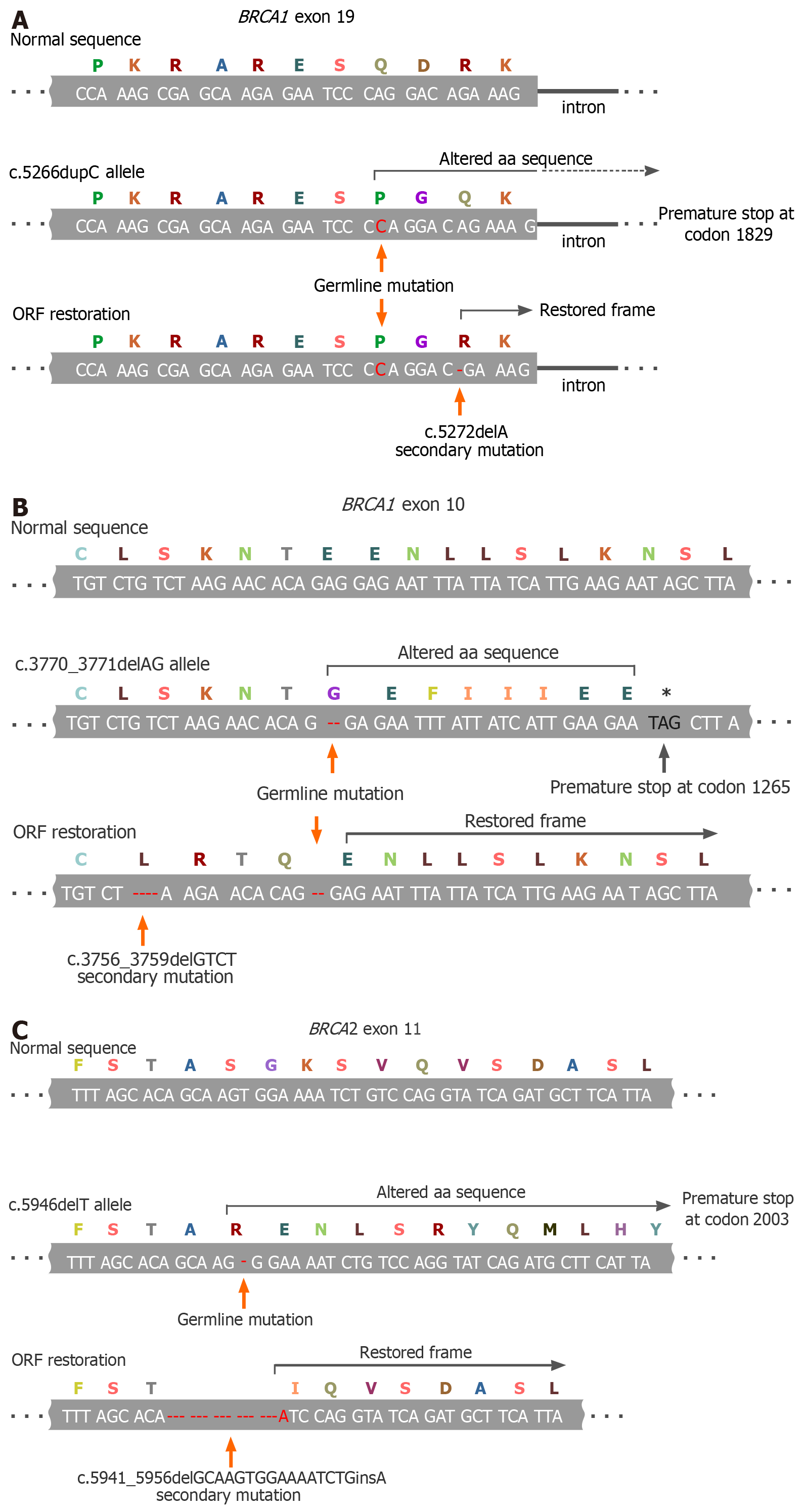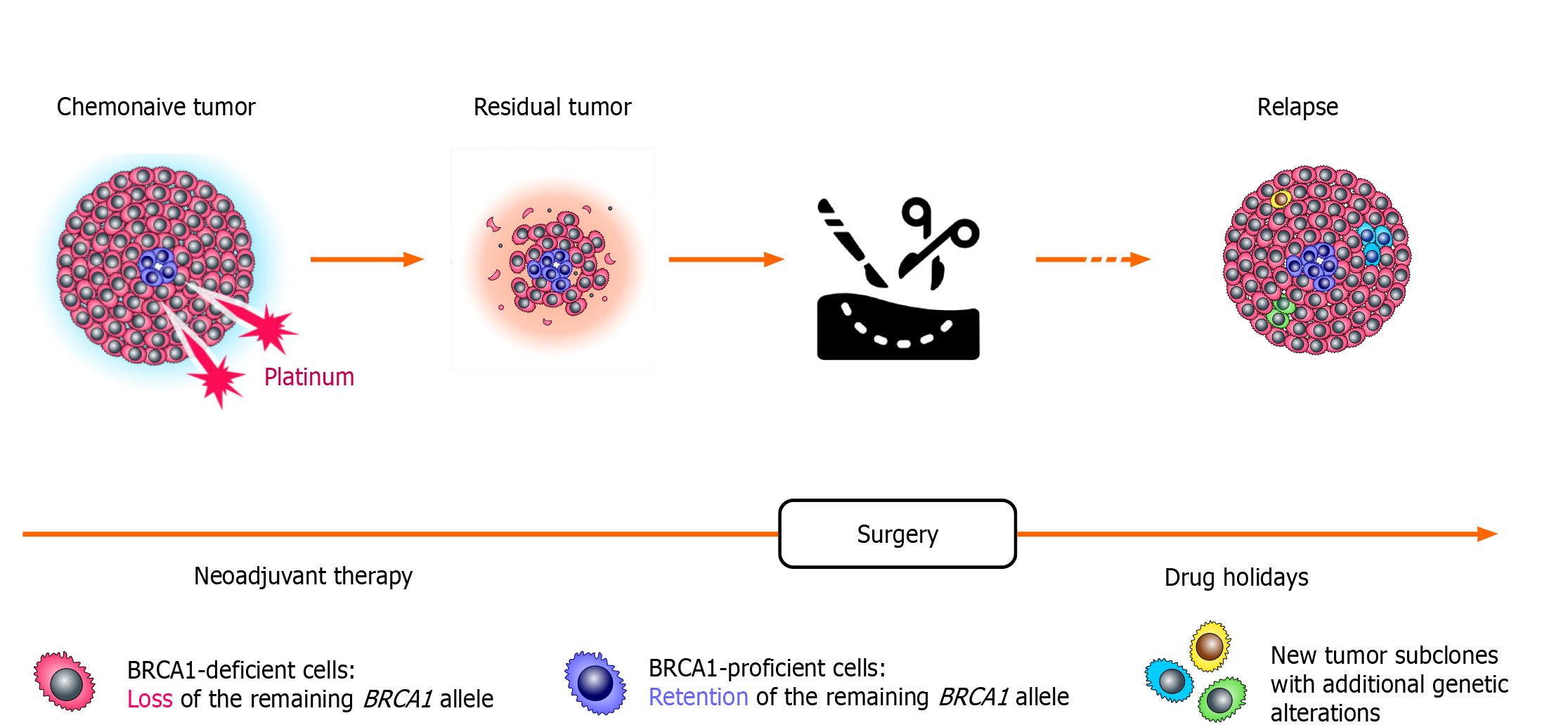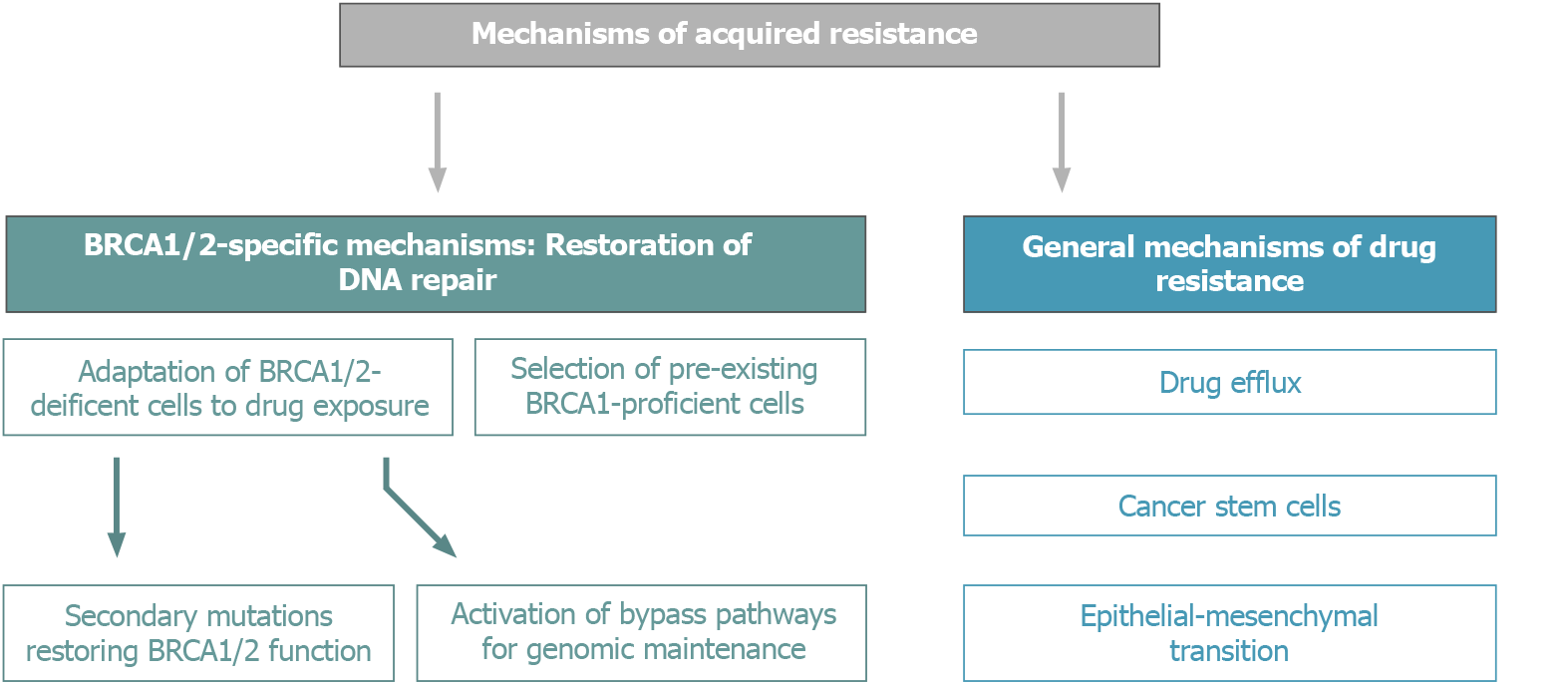Copyright
©The Author(s) 2021.
World J Clin Oncol. Jul 24, 2021; 12(7): 544-556
Published online Jul 24, 2021. doi: 10.5306/wjco.v12.i7.544
Published online Jul 24, 2021. doi: 10.5306/wjco.v12.i7.544
Figure 1 Examples of BRCA1/2 open-reading frame restoration in BRCA1/2-mutated tumors during systemic therapy.
A: Secondary 1-bp deletion occurring downstream to the germline mutation (BRCA1 c.5266dupC; described in[22]); B: Secondary 4-bp deletion located upstream to the germline mutation (BRCA1 c.3770_3771delAG; an example from[23]); C: Secondary in-frame deletion/insertion excising the mutation-containing gene fragment (BRCA2 c.5946delT; an example from[24]). ORF: Open-reading frame.
Figure 2 Selection of pre-existing BRCA1-proficient cells during platinum-based therapy.
Loss of the remaining BRCA1 allele is observed in the majority of cells forming the tumor; however, even chemonaive BRCA1-driven ovarian cancers contain a small fraction of transformed cells with retained BRCA1 heterozygosity. These cells are platinum-resistant and rapidly repopulate tumor mass during neoadjuvant therapy for ovarian cancer. During platinum-free interval, which occurs after the completion of the adjuvant therapy, these BRCA1-proficient cells become outcompeted by cells carrying BRCA1 LOH. Therefore, ovarian cancer relapses resemble primary tumors with regard to the BRCA1 status, as they demonstrate again the BRCA1 deficiency and the sensitivity to platinum compounds.
Figure 3 Mechanisms of acquired resistance of BRCA1/2-driven tumors to platinum compounds and PARP inhibitors.
- Citation: Imyanitov E, Sokolenko A. Mechanisms of acquired resistance of BRCA1/2-driven tumors to platinum compounds and PARP inhibitors. World J Clin Oncol 2021; 12(7): 544-556
- URL: https://www.wjgnet.com/2218-4333/full/v12/i7/544.htm
- DOI: https://dx.doi.org/10.5306/wjco.v12.i7.544











